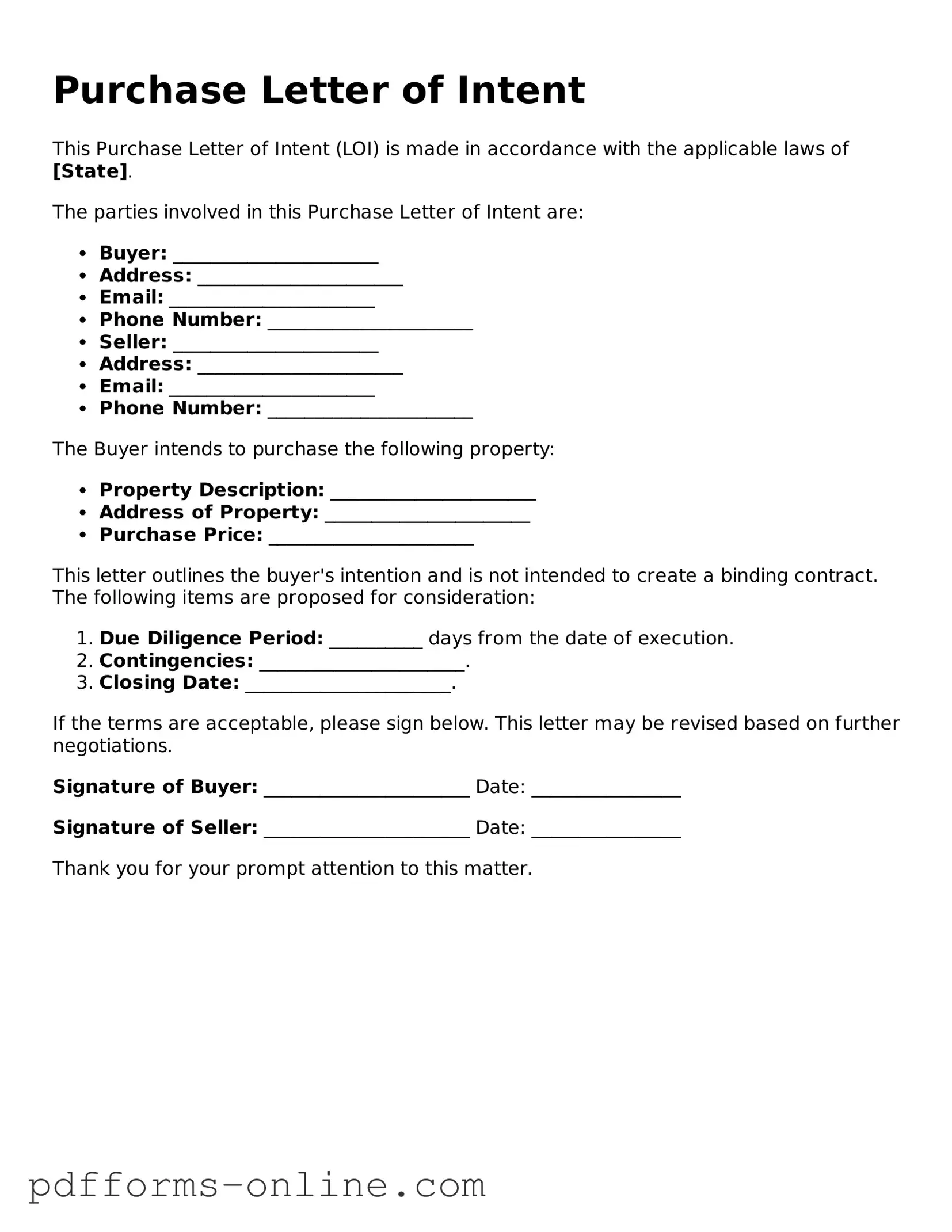A Memorandum of Understanding (MOU) is similar to a Purchase Letter of Intent in that both documents outline the intentions of parties involved in a potential transaction. An MOU typically serves as a preliminary agreement that details the basic terms and expectations before a formal contract is created. It helps clarify the parties’ goals and responsibilities, fostering a mutual understanding and setting the stage for future negotiations.
A Term Sheet is another document that shares similarities with a Purchase Letter of Intent. It provides a summary of the key terms and conditions of a proposed agreement. Term sheets are often used in investment deals and can outline aspects such as pricing, timelines, and obligations. Like a Purchase Letter of Intent, it is not legally binding but serves as a guide for drafting a more formal contract.
For those navigating the homeschooling journey, the important Texas Homeschool Letter of Intent requirements should be clearly understood. This form not only signals the family's commitment to home education but also ensures compliance with state regulations, helping to facilitate a smooth educational experience.
A Non-Binding Agreement is also comparable to a Purchase Letter of Intent. This type of document outlines the intentions of the parties without creating any legal obligations. It allows parties to express their interest in moving forward with a deal while still leaving room for negotiation. This flexibility can be crucial in complex transactions where details are still being worked out.
A Letter of Intent (LOI) is very much like a Purchase Letter of Intent, as both documents express a party's intention to engage in a transaction. An LOI often includes specific terms and conditions that the parties agree to pursue. While it may not be legally binding, it can lay the groundwork for a more detailed agreement and signal serious interest in the deal.
An Offer Letter is another document that can resemble a Purchase Letter of Intent. It is typically used in employment contexts, outlining the terms of a job offer. While it’s focused on employment rather than a purchase, both documents share the purpose of detailing intentions and terms before a final agreement is reached.
A Confidentiality Agreement, or Non-Disclosure Agreement (NDA), shares a common purpose with a Purchase Letter of Intent in that it establishes trust between parties. While a Purchase Letter of Intent focuses on the intent to negotiate a deal, an NDA ensures that sensitive information shared during those negotiations remains protected. Both documents are essential in fostering a secure environment for discussions.
A Purchase Agreement is the final step in the transaction process, and while it is more formal than a Purchase Letter of Intent, the two documents are closely related. The Purchase Agreement solidifies the terms outlined in the Letter of Intent, creating a binding contract. The intent expressed in the Letter of Intent often serves as the foundation for the more detailed Purchase Agreement.
A Sales Agreement is similar in nature to a Purchase Letter of Intent, as it outlines the terms of a sale between a buyer and a seller. While a Purchase Letter of Intent expresses interest and intent to negotiate, a Sales Agreement finalizes the transaction. Both documents are crucial in the sales process, guiding the parties toward a successful deal.
